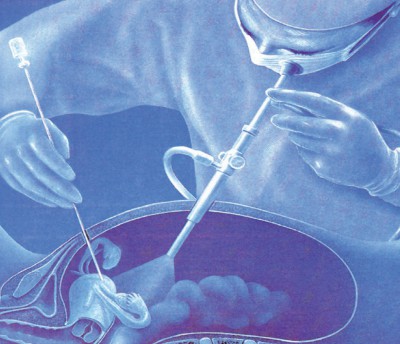
Laparoscopy
Laparoscopy is a procedure to look inside of the abdomen and pelvis using a laparoscope. This helps to see the ovaries, outside of the tubes and uterus and other organs inside the abdomen. The laparoscope is a special telescope to which a light source and camera is attached. It is about as thick as a pen and about 12 cm long.
Laparoscopy is commonly used to:
find the cause of symptoms such as abdominal pain, pelvic pain as part of investigation of infertility.
In addition to simply looking inside, a doctor can use fine instruments to perform surgery inside the abdomen. This laparoscopic surgery is also called ‘key-hole surgery’ or ‘minimal invasive surgery’ and maybe used to treat cysts, endometriosis, fibroids, perform hysterectomy and even pelvic floor reconstruction.
In general, compared to traditional surgery, with laparoscopic surgery there is usually:
– less pain following the procedure.
– shorter hospital stay.
– quicker recovery.
– much smaller scar
You may have some pain in your shoulder tip. This is caused by the gas which had been pumped inside irritating the diaphragm which has the same nerve supply as the shoulder tip. This pain passes off in a couple of days.
Recovery after a laparoscopic procedure is very rapid. There is no need for bed rest and most patients are able to resume full activities within a few days to a week after laparoscopy.
Hysteroscopy
Hysteroscopy is another minimally invasive surgical technique which is often useful in the diagnosis and treatment of infertility. It does not involve an incision since the hysteroscopy (a similar long narrow instrument with a lens at one end) is inserted directly into the uterus via the cervix. Through the hysteroscopy, safe and effective treatment of problems such as fibroids, polyps, intra-uterine septum or intra-uterine scar tissue (a.k.a. Asherman’s syndrome) can be achieved.





